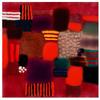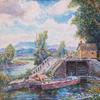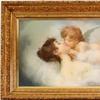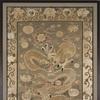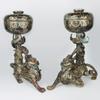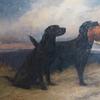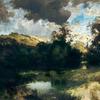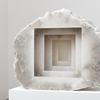$10 Million Gift Dramatically Increases Nelson-Atkins Photography Collection
- KANSAS CITY, Missouri
- /
- November 13, 2017
The Hall Family Foundation, in continuing its long support of the photography program at The Nelson-Atkins Museum of Art in Kansas City, made a special $10 million grant to broaden and deepen this collection. Recognized around the world, this is one of the finest museum photography collections in the nation. The gift permitted a more intensive acquisition focus from 2015 to 2017. About 100 of the more than 800 newly acquired photographs will be on view in a Spring 2018 exhibition, The Big Picture: A Transformative Gift from the Hall Family Foundation, to coincide with the Foundation’s 75th anniversary.
“The generous and steadfast support of the Nelson-Atkins by the Hall Family Foundation is the reason our photography collection is world-renowned,” said Julián Zugazagoitia, Menefee D. and Mary Louise Blackwell CEO & Director of the Nelson-Atkins. “The leadership and vision of Donald J. Hall and the stewardship of the Foundation through the years has improved and enriched the cultural scene in Kansas City in myriad ways.”
The acquisition process and the selection of works in The Big Picture were a collaborative effort by the photography department’s Keith F. Davis, senior curator; April M. Watson, curator; and Jane L. Aspinwall, associate curator. Davis has overseen the Hallmark Photographic Collection for nearly 40 years. He arrived in Kansas City after interning at the George Eastman House in 1979 to begin a six-month stint as cataloguer of the collection; he never left.
The special $10 million gift allowed the curators to build on the collection’s existing strengths—primarily its broad holding of American daguerreotypes and prints—and to enhance its representation of 19th-and 20th-century European and contemporary international works. These new pieces span the entire history of the medium, from an 1826 print by Joseph Nicéphore Niépce, the inventor of photography, to a 2016 work by legendary musician and artist Patti Smith. Many of history’s most famous names are represented, including Nadar, Gustave Le Gray, Edward Steichen, Jaromir Funke, Claude Cahun, Alfred Eisenstadt, Dorothea Lange, W. Eugene Smith, Robert Frank, and Diane Arbus. Also represented are leading contemporary artists such as Cindy Sherman, Paul Graham, Ellsworth Kelly, Carrie Mae Weems, Dayanita Singh, Ilit Azoulay, Thomas Struth, Candida Hofer, and Thomas Demand. This two-year initiative has resulted in the addition of more than 800 objects, made over a span of 190 years, by artists from more than a dozen countries.
“This special acquisition initiative has been immensely gratifying,” said Davis. “We three curators reviewed a great deal of work and thought hard about collection priorities. We sought to enhance our existing strengths, while adding depth in other key areas of interest. These new works will allow for more varied and stimulating shows, and fresh scholarship, for many years to come. This is a direct benefit to our community and our field. We cannot thank the Hall Family Foundation enough for this remarkable opportunity, and for its long history of generosity.”
This collection is the product of a remarkable story of enlightened patronage. Hallmark Cards, Inc. has been involved in the fine arts since the late 1940s, when company founder J. C. Hall envisioned a series of competitions and traveling exhibitions of contemporary art. In 1949, Hallmark organized its first International Art Award competition, opened to artists in France and the United States. An exhibition of the winning works toured nationally, with proceeds benefiting the American Red Cross. This was followed by four subsequent competitions, ending in 1960. By that time, the Hallmark Art Collection held a larger and more varied collection of contemporary paintings than some museums and almost any other American corporation.
David L. Strout played a central role in Hallmark’s involvement with photography. In 1963, Strout was recruited by J. C. Hall to direct the new Hallmark Gallery store on Fifth Avenue in New York City. From 1964 to 1973, Strout organized a diverse sequence of exhibitions that combined popular culture with the art of photography. The Hallmark Gallery’s “Harry Callahan” exhibit of 1964 was the artist’s first one-person show in New York, and the company purchased all 141 prints. Similar exhibitions followed, and in 1968 Strout proposed that Hallmark officially begin collecting fine photographs. The first body of work acquired for the new collection in 1969 was by the medium’s greatest living master, Edward Steichen, followed quickly by notable purchases of work by Henri Cartier-Bresson, André Kertész, Edward Weston, Berenice Abbott, László Moholy-Nagy, and others. By 1979, Hallmark’s collection included 650 photographs.
In 1966, J. C. Hall’s son, Donald J. Hall, assumed the role of company president and CEO and soon put his imprint on the firm’s corporate and cultural profile. His artistic interests were broad, including architecture, jazz, photography, sculpture, and African art. He served as a Trustee of the Nelson-Atkins from 1980 to 2011. As head of the Hall Family Foundation, he continues to provide the guiding philosophy for its charitable activity, which includes extensive support of the Nelson-Atkins. In 1986, for example, the Foundation donated a collection of 58 sculptures and maquettes by Henry Moore; this was followed by individual sculptures by Constantin Brancusi, Alberto Giacometti, Max Ernst, and others. Mr. Hall has said, “These activities reflect a fundamental belief in the importance of art to our quality of life and our cultural well-being. Art—in any medium—is about the communication of ideas and emotions, the unending dynamic of change, and the power of the imagination.”



